Environmentally Friendly Solar Lighting Project
Info: 11710 words (47 pages) Dissertation
Published: 22nd Oct 2021
Tagged: EngineeringMechanicsElectronics
Abstract
This project is a combined electrical & mechanical engineering project aimed at providing ample, reliable and environmentally friendly solar lighting to the pier of Lobitos, Peru. This will re-establish the pier and provide lighting during normal usage hours for the local fisherman but also local tourists who may wish to use the pier later on in the evening or early morning.
The methods used for this project were a combination of electrical calculations such as PV array, battery bank, cable sizing, Earthing and lightening requirements. Mechanically loading calculations and stability calculations have been completed to prove that our design can withstand the current environment that it will be installed into in Lobitos, Peru.
The main findings of our project were that the pier needed much more additional equipment than was first thought and this altered our design and original costings considerably. While the solar PV project can be completed it would need to be subsidised by an external investor but this would increase the popularity of Lobitos by providing an accessible pier to all including the local surfing community who have a big tourist influence in the area.
Our project concluded that further action which could be taken to improve the installation would include an emergency backup grid supply to the PV system, in the event of an emergency blackout with the PV, a trip relay would be activated and the mains be activated so there is minimal disruption to the pier in an emergency situation. Also, when the installation had been completed the pier owners could implement a small fee for docking to upkeep the amenities.
Contents
Abstract
Introduction
Introduction to Lobitos.
Introduction to our project.
Literature Survey
Method
Electrical Design Review
Mechanical Design Review
Results
Discussion
Conclusion
Acknowledgements
Bibliography
References
Cost Analysis
Introduction
Introduction to Lobitos
Lobitos is a small town of approximately 1600 residents in the northern coastal region of Peru (South America), it currently makes up one of the six districts of the province Talara (the capital). Lobitos was once a quite important and flourishing town with a booming economy, much larger population and good infrastructure for its citizens. In recent years Lobitos has become left behind with some serious issues ranging from healthcare, clean water and waste management to name a few.
Lobitos was founded at the end of the 19th century for the sole purpose of the petroleum industry due to its location and abundance of raw materials. In 1904 the first oil wells were constructed and Lobitos was put on the map. Until 1968 Lobitos developed rapidly under an greed arrangement with the British and Americans due to an legally agreed lease of the town, this is where current day Lobitos gained its infrastructure including roads, electricity distribution network, housing, hospitals, a pier and a desalination plant.
Lobitos in general has a very poor and inefficient energy distribution network (single 13.2kV line single phase 220v 60Hz supply from approx. 8km away) once a week they experience a blackout for approximately two to three hours and once a month this can last a day or more. Approximately 40% of Peru’s electricity is generated using fossil fuels and is likely to increase, with the above in mind our project was detrimental to try and offset some of the carbon footprint which would be produced by fossil fuels.
In 1968 a military coup took place which changed all of the above overnight. All oil fields were nationalised and Petro-Peru was formed to run the newly acquired assets. In the same year the Peruvian military decided to construct a new military base in Lobitos due to its geographical location and nearby air field in Talara. Until 1999 7,000 troops were based in Lobitos but due to a peace agreement with neighbouring country Ecuador they were soon moved out and a small military presence still remains although this has no impact on Lobitos anymore.
As the military and foreign investors moved out of Lobitos much of the infrastructure built up by them was looted, destroyed or left in general disrepair. Due to the 1997 El Nino weather phenomenon surfers have been descending to the local area in search of the world class waves. Tourism has been increasing year upon year and is the main source of income along with fishing.
Introduction to our project
Our project began with trying to solve too many of the problems in Lobitos i.e. trying to provide backup emergency power to the local medical facility and also the pier together with the solar lighting. Once we had completed our stage gates (attached below) we concluded that the best use of our project would to provide solar powered energy efficient lighting on the pier for the fisherman who currently use it and future tourists.
The pier and surrounding area currently comprises of several facilities to support the fishing fleet these include a car park, process building, a quay and access road which connects them all. Street lighting is currently used to illuminate these during the night and allow safe use. Usual pattern used by fishermen in the area is to launch very early in the morning in darkness and return around midday to process there catch.
Currently the Association Gremio de Pescadores Artesanales (ARPA – association of local fishermen) pays for the electricity that is used in the above facilities this is approximately 150s/month. There are 12 outside lights in total using 80 watt bulbs which were installed in the mid 1990’s which run from 7pm to 5am daily (Picture attached below for reference).
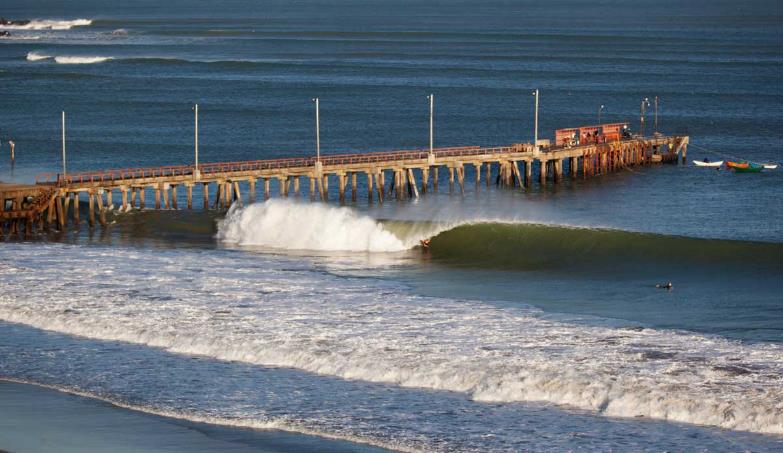
Fig 01 – Current picture of the Lobitos pier.
The introduction of lighting to the pier will enable the pier to be operated 24 hours a day if required. The lighting system will harness the energy provided by the sun and store it for use at night with the use of energy efficient light fittings, a battery storage system and inverter to monitor the systems storage and usage requirements.
This projects aim is to reduce the dependence on the unreliable and inefficient electrical infrastructure currently located in Lobitos. The introduction of a solar powered lighting system will have a positive impact on the economy by providing the fishermen with a reliable lighting source, the environment by removing the use of fossil fuelled energy required to light the existing lighting fittings currently in place and also the tourism as the pier wold be able to be used for a multitude of other activities such as water taxi from Talara and other further afield ports thus keeping the roads unused and carbon dioxide levels as low as possible for local residents health and wellbeing.
Literature Survey
PV cells were discovered when selenium was being used to generate electricity when in visible sunlight yet not in darkness in 1860 by Willoughby Smith, During the 19th century many scientists tried to harness the power generated by the selenium but had no success due to the limited amount of electricity produced. In 1953 scientist Daryl Chapin discovered that silicon could be used instead of selenium and was 50 times more efficient, after this many governments began their own research into PV generation and the uses for it. Since then PV has been responsible for many engineering accomplishments such as solar powered satellites, radio systems, light houses and offshore oil rig power generation.
Due to the ever increasing efficiency of solar PV equipment, Lobitos geographical location and the piers need of a modern environmentally friendly lighting solution, our project focused mainly on this current issue affecting the fishermen and local residents. The Food & Agriculture (FAO) organisation have produced a technical paper listing the requirements that a small to medium sized fishing port requires. Within section 11.4.1 it details that before any works are started an energy audit is completed and assessed, then it can be decided if PV is suitable for the applications required. If PV is suitable the recommendations are that the lighting systems are usually one of two types:
- Standalone system – Battery charged system with no mains back up.
- Grid fall back system – Battery charged system with a mains failure relay in case of emergency mains back up requirement.
Other notes made are that the system should use gel batteries to prevent an environmental incident, to conform to ISO14000 & COSHH (applicable regulations regarding the installation of batteries) if a malfunction appears and all fittings used are to be either aluminium or stainless steel depending on the application.
Due to our system being installed externally on the pier and subject to all the elements experienced by Peru, being used for pedestrian access and the desire to make it easily maintainable, we began to look at appropriate standards used and different examples currently being used elsewhere.
Current PV installations being used in piers around the world include Abidjan harbour in the ivory coast and also Santa Monica pier in Los Angeles, who not only use this for lighting but power generation which extends the use of the natural resource available.
An IEEE journal released in September 2014 detailed that efficiencies have continued to grow from there discovery but recently a 25% conversion efficiency had been achieved (the highest ever recorded by engineers at Panasonic) and they expect to see a conversion rate of at least 30% by 2020. This is due to new materials emerging which have much better electrical generating properties and companies such as Panasonic and Philips taking advantage of these. These companies mass produce them for markets such as Peru and emerging countries which have towns which are too far from the main source of supply or where the supply is currently at its maximum capacity.
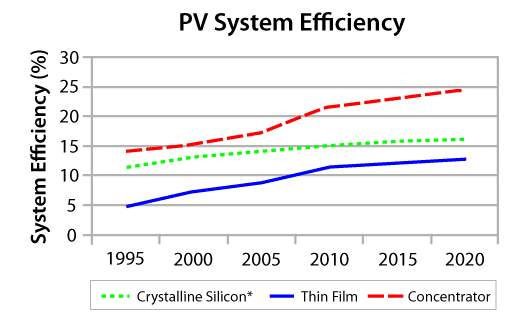
Fig 02 – Increasing efficiency of PV systems. (IEA-PVPS, 2017)
The use of PV has grown since the early 2000’s in south America with a strong growth towards 2010, this is down to the cost of small PV systems (
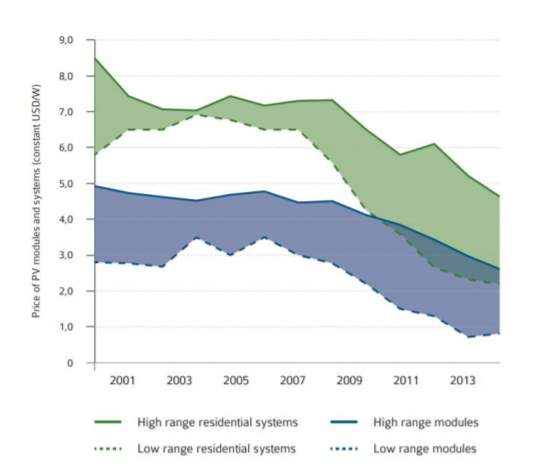
Fig 03 – Falling price of PV systems in South America. (IEA-PVPS, 2017)
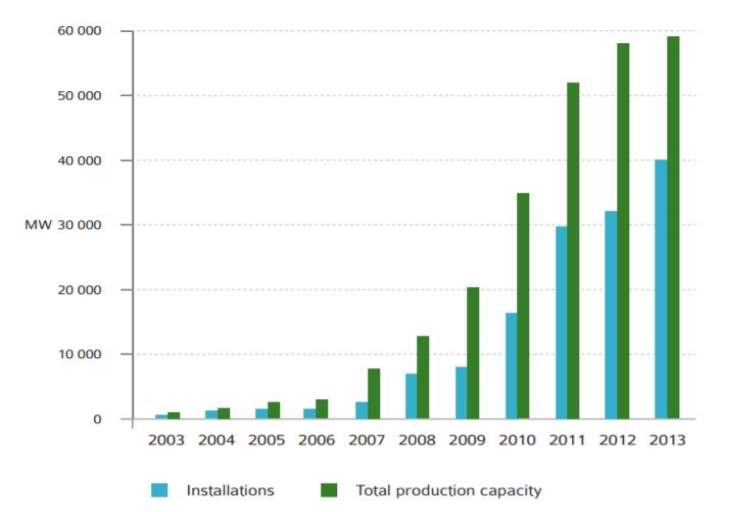
Fig 04 – Installations in South America vs production capacity provided. (IEA-PVPS, 2017)
A paper written by Ken Zweibel Should solar PV be deployed sooner because of long operating life at low, predictable cost details that PV generation over the years has gained momentum but the major advantage of a PV development is hugely ignored: the amount of maintenance required once installed and running is almost zero. Like the hoover dam once built up to a high standard and installed / commissioned correctly the systems can require only very simple maintenance to carry on running to their maximum operating outputs. This also enables an accurate maintenance costing to be generated so once the system is in place as long as there are no damages etc. it should be guarantee 20 years of efficient lighting for the pier it is illuminating.
The weather in Lobitos is due to its geographical position isn’t subject to change between the seasons and makes it an ideal location for a solar PV array. As seen in the below graphs the weather dating back to 2009 has been predictable and when calculating the PV output this is extremely useful as no account needs to be taken for seasonal changes.
Wind speed in Lobitos is also low for such a coastal location, this has been taken into account for the design of the solar PV array and the protection needed to be incorporated into our design. Due to it being a 20mph high and 15mph average the standard installation method for PV panels will be adequate.
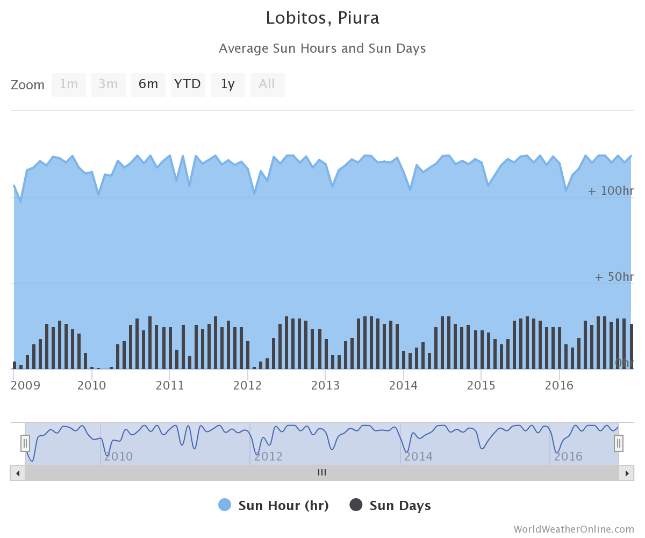
Fig 05 – Average sun hours in Lobitos 2009-2016 (meteoblue, 2017)
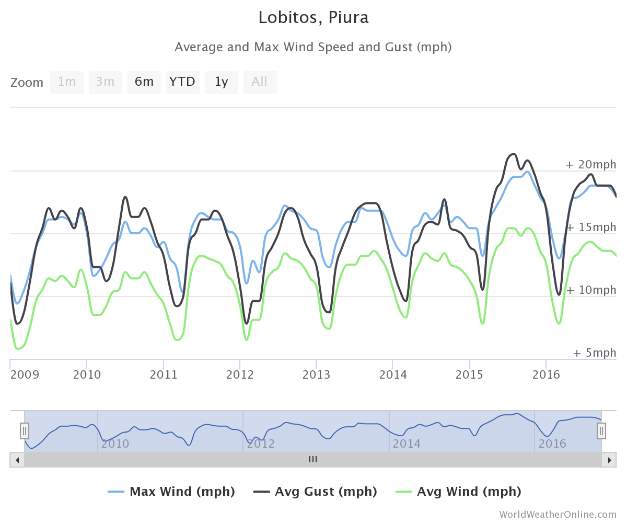
Fig 06 – Wind speed in Lobitos 2009-2016 (meteoblue, 2014)
Solar irradiance is another consideration when designing the PV array, solar irradiance is the amount of solar energy that can be captured by a PV panel at a certain location. This can be affected by a number of factors such as:
- Levels of cloud cover and rain received annually
- Location characteristics such as shading currently received from other buildings in the area, plant life etc. at certain parts of the day / year.
- The geographical location (latitude & longitude) of the site, this includes the atmosphere that the light will have to travel through to reach our PV cells.
Lobitos geographical coordinates are -4.45 latitude and -81.27 longitude, It is estimated that the amount of solar radiation Peru receives is 5kWh/m²/day (Figure provided by the National Renewable Energy laboratory – NREL) this is measured by taking all variables into account such as cloud cover, gases, atmospheric aerosols and water vapour present in the atmosphere. Below are the results of the solar radiation received by Peru measured over the course of a year in 2015.
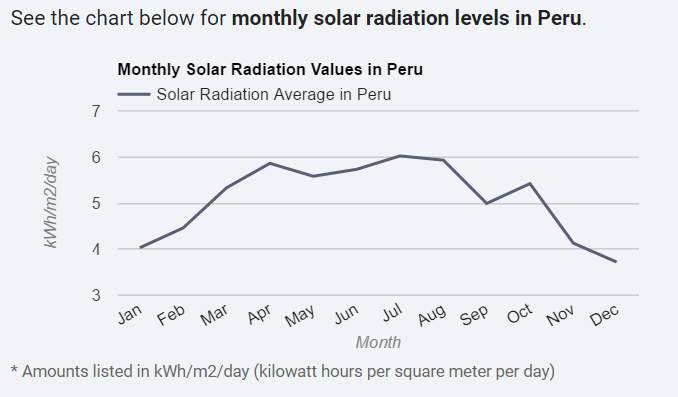
| Jan | Feb | Mar | Apr | May | Jun | Jul | Aug | Sep | Oct | Nov | Dec |
| 4.03 | 4.46 | 5.33 | 5.86 | 5.58 | 5.73 | 6.02 | 5.93 | 4.99 | 5.42 | 4.13 | 3.72 |
| 2015 Average | 5.1 kWh/m²/day |
Fig 07 – Solar radiation levels in Peru (Solar Power Local / Peru 2017)
The research above influenced our project by showing us what choices of equipment we had to use within our design also that the modern produced PV systems have a much higher energy efficiency and that systems can be installed then expanded over the years as the facility grows to power larger equipment and reduce the fossil fuel reliance. We will be building on the above and producing a full design which will include calculations for all relevant parts of the PV system including PV cell sizing, battery bank sizing, cable calculations, earthing calculations and weighting calculations.
Method
We evaluated our original design ideas using key objectives which our project had to achieve, these were:
- Improve an existing well used community asset
- Increase the tourism in Lobitos through the asset we are improving
- Help one of the top three forms of employment in Lobitos
- Show how modern technology can improve everyday life and be adapted to be used in the home
- Create at least one job for a local person
- Be environmentally friendly and reduce the strain on fossil fuels currently used where an alternative is readily available.
- Be constructed in align with all relevant BS & European standards
Working through our objectives we decided that the medical facility was adequately equipped and our resources could be used much better by improving the pier for the fishermen who use it every day and rely on it for their livelihood, while improving it for the fishermen we can also improve its appearance and motivate tourists to be attracted to Lobitos due to its geographical location and increasing surfing popularity.
Once we had chosen the pier as our area of improvement we had to evaluate the materials we would use, these again were picked due to key criteria they had to achieve these were:
- Readily available if replacements were required
- Fit for the environment the equipment is being installed in
- Simple to use / repairable
- Local materials available for use if suitable
- Constructed using environmentally friendly procedures if available
Solar power is our chosen area of energy production due to its increased efficiency in recent years and that Lobitos has an above average hours of direct sunlight per day greater than most places in the world making it a more than suitable location.
Our project has been broken down below into two sections (Electrical &mechanical) to explain how we have calculated the equipment needed and explain our choices.
Electrical Design Review
The design of our PV array is shown below, this will be explained in detail and split up into each relevant section and explained during the design review. Due to Peru not having substantial standards regarding electrical installations, British standards and applicable European standards will be used.
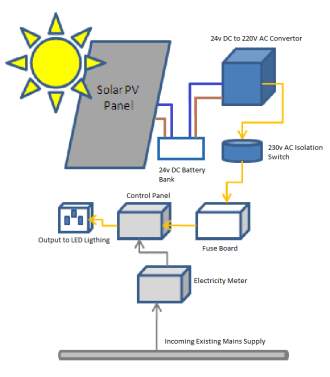
Fig 08 – PV Array Design
The electrical design part of the PV installation at the pier comprises of the below:
- Overall PV design explained
- Lighting calculations (Amount of new light fittings required)
- PV panels & Battery sizing calculations
- Cable specification and sizing calculation to BS7671
- Earthing requirements to BS7430
- lightning strikes to BS EN 62305 Part 4
- Cable containment and installation method suitable for pier & jetties
- Applicable IP ratings of all associated equipment
- Electrical installation block cable diagram (PDF & CAD File)
- PDF’s of all relevant information used in the above sections.
1. Overall PV Design
The Solar photovoltaic system (PV) is an environmentally friendly renewable energy system which uses PV modules to convert sunlight into electricity. The electricity generated in our system will be stored during the day to be used at night when the dusk to dawn sensor is activated. Modern solar PV systems are extremely reliable and a good alternative to using fossil fuel generated electricity to power low consumption items such as LED lights.
The system is made up of a number of components these are:
- PV modules
- Battery bank
- Invertor
- 230v AC isolation switch
- Fuse board
- Control panel
- Output to LED luminaires
1. PV modules are made up of multiple cells wired in parallel to increase the current generated or in series to produce a higher voltage, the modules are encapsulated in tempered glass on the front and a protective weatherproof material on the back to stop ingress of foreign materials then encapsulated in an aluminium housing. Our panels (8 off) will be wired in parallel to get the maximum amount of current needed to power our system, additionally we will be using mennekes 230v 4 pin plug and socket system to ease in any maintenance which may occur in the future.
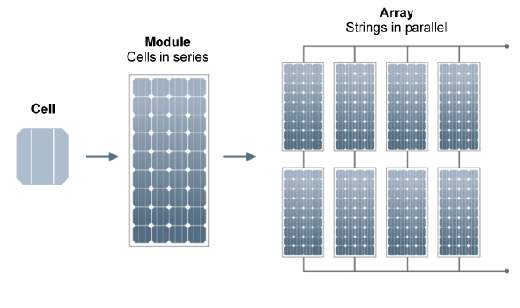
Fig 09 – PV Module Design.
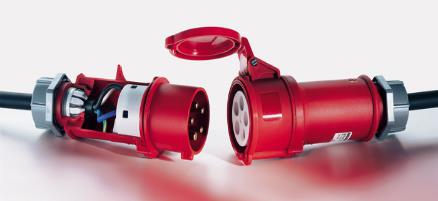
Fig 10 – Mennekes Plug & Socket (Mennekes 2017)
2. The batteries will charge during the day when the PV modules are converting the suns solar energy into electricity. Battery capacities are normally given in amp hours at a given voltage, i.e. 90 Amp hours (Ah) at 12 volts, batteries are electrochemical devices and are sensitive to a number of factors such as climate, charge/discharge cycle, age, temperature etc. We shall be using gel batteries due to their increased safety rating and improved lifespan over traditional lead acid batteries used in solar PV installs.
3. PV systems produce 24V direct current (DC) power which is not suitable to power the luminaires. To overcome this issue we will need to use an 24V DC to 220V AC inverter 60Hz (cycles per second). Modern inverter efficiencies range from 90-95% depending on brand and cost – we have selected to use an 3000W model which will give us a 10% safety factor should the system ever want to be expanded by one more PV module. Early inverters produced a square wave which would have been inadequate for our system but modern inverters produce a modified sine wave which is energy efficient and environmentally friendly.

Fig 11 – Inverter Wave Analysis (Solardirect.com, 2017)
4. An isolation switch shall be installed shall the system ever have to be taken out of service to be inspected or repairs taken place on the PV modules, battery bank or Inverter. A 32Amp rotary isolator with lockable function will be more than adequate due to the systems low output.
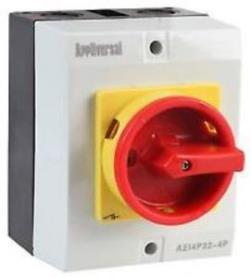
Fig 12 – 32A Rotary Isolator
5. A small 3 way consumer unit will be fitted to protect all outgoing cables and to comply with BS7671 this will be RCD protected at 40Amp 40mA due to the nature of the environment the installation is being installed in. Due to using 16mm² 3 core XLPE/SWA cabling the miniature circuit breaker (MCB) installed will be a 32Amp. Only two ways will be used in the consumer unit which leaves an additional way for spare capacity.
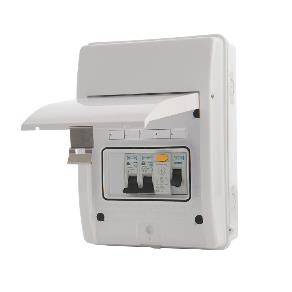
Fig 13 – 3 Way Consumer Unit
6. A control panel will be present after the consumer unit, this will be where the dusk to dawn sensor and multifunction switch will be cabled to enable the authorised person at the pier to select which function controls the lighting i.e. Auto (Dusk to dawn sensor controlled), Manual (on/off light switch) and off (maintenance use function). This will be designed to be 50% larger than required to leave additional space for future expansion.
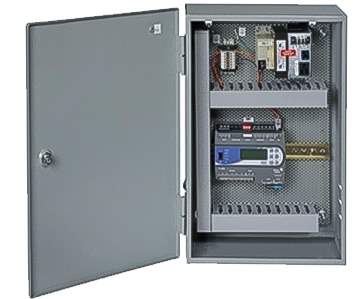
Fig 14 – PV Control Panel
7. Exiting the control panel will be the 16mm² 3 core XLPE/SWA cabling which will power and adequately earth our new lighting system being installed on the pier.
2. Lighting Calculations
Currently there are 12 luminaires covering the pier, the pier has been measured using google maps to be 315 metres long (Attached below Fig.1). New luminaire posts will be installed which will be 6m in length (Design & Installation to be explained below in the mechanical design review).
To reduce the number of luminaires required to adequately illuminate the pier a wide angled unit has been specified, the 120W LED Marine Flood Light Model No: BL-FL04-120W-277-XX.
http://www.led-cfl-lighthouse.com/page/401659680
The luminaire uses 0.3 Amps at 220V 60Hz AC. This will provide around 75 lux of light which is equivalent to a well light corridor / maintenance plant room, more than adequate working conditions. The unit provides 16.7 metres working light in all planes at a height of 6 metres, to fully cover the pier to UK highway specification (BS 5489:1:2003) we would need 19 of these units but to provide pedestrian access only we are able to reduce that down to 8 luminaires due to overspill from previous lights and external influences.
Length of use for the 8 luminaires has been set to 6 hours.
| Device | Voltage (V) | Power (W) | Length of use (HR) | Power use (W/24hr) |
| 120W LED Pier Luminaire BL-FL04-120W-277-XX | 220V | 120 | 6 | 720 |
Table 1 – Luminaire Power (W) Usage
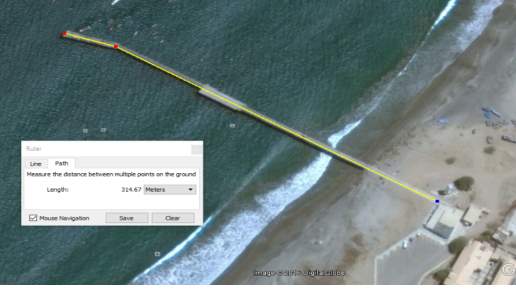
3. Battery Bank Sizing & PV Array calculations
The 8 luminaires required to illuminate the pier require 5760 W/24hr period. A battery bank of 10 universal UB-30H 98Ah gel batteries would be required. The batteries will be operating at 100% temperature compensation (25’c) due to them being housed in the process building in a purpose built enclosure to maintain constant temperature and to provide additional security and safety. The discharge has been set to 75% to allow for additional backup if needed, to extend the life of the batteries and reduce the ongoing costs for replacement.
The system has been designed so that 3 days automated use can be used if necessary. This has been done to allow for any maintenance to be carried out on the PV cells or limited sunlight available due to bad weather etc.
| AC Loads | 720*8 | W/24hr | 5760 | W/24hr |
| Days running per week | 3 | Days | 17280 | W/24hr |
| Temp compensation | 100 | % | 17280 | W/24hr |
| Depth of discharge | 75 | % | 21600 | W/24hr |
| Inverter Efficiency | 93 | % | 23112 | W/24hr |
| Voltage | 24 | V | 963 | Ah |
| Battery Bank Requirements | 970 | Ah | ||
| Batteries requires at 98Ah each | 10 | Req’d | ||
Table 2 – Battery Sizing Requirements
The PV array needed to charge the batteries and illuminate the 8 luminaires for 6 hours at a constant load has been calculated at 2616W. The water tower currently casts a small shadow upon the roof of the process building so this has been taken into account in our shading calculations and our panels will be placed accordingly when installed to minimise this effect. Eight 345W Canadian solar CS6U-345M panels in parallel would generate 2760W, enough to supply our batteries and luminaires.
| Total Solar Power Required | 17280 | W/24hr |
| Battery Efficiency | 85 | % |
| PV Array Efficiency | 96 | % |
| System Efficiencies | 90 | % |
| Shading Efficiencies | 90 | % |
| Overall Efficiencies | 90.25 | % |
| PV System – Efficiency Losses | 18965 | W/24hr |
| Peak Sun Hours | 7.25 | hr/day |
| PV System Sized To Available Energy | 2616 | W |
| Canadian Solar 325W 24V PV Panel | 8 | Required |
Table 3 – PV Array Calculations.
4. Cable Specification and Sizing Calculation to BS7671
Due to the installation being constantly exposed to the elements it will be cabled using armoured cable compliant to BS5467 & IEC 6052. This means that the cabling method chosen is compliant as it is adequately protected with an single galvanised wire armour and PVC coated for durability.
We will be using a 3 core cable to harmonized colouring, Brown Blue & Green/Yellow to comply with BS5467 Table 7C. An integral earth will be used to connect directly to the lampposts to maintain direct contact with earth should any electrical component fail and short circuit, the armouring shall also be earthed back in the main process building.
The 8 luminaires required to illuminate the pier require adequate cable sizing to make sure that the current required and voltage will reach the last light fitting. Volt drop is a major factor in designing a lighting infrastructure such as our pier project due to it being only single phase fed. BS7671 states that there should be no more than 3% volt drop across the entire length of the circuit.
Volt drop occurs in alternating current (AC) circuits due to a few factors: resistance and reactance, these combined are known as impedance. Electrical impedance is normally represented in ohms at a measured frequency. Electrical impedance is calculated as the vector sum of capacitive reactance, electrical resistance and inductive reactance. The amount of impedance in an AC circuit depends on the frequency, permeability of electrical conductors, length and size of conductor being used. This has been calculated below.
| V= | 2(Ix0.0175xL) | I | = | The current being carried by the cable in amps | |||
| A | L | = | The length of the cable in metres | ||||
| A | = | The cross sectional area of a single conductor in mm² | |||||
| Note: BS7671 advises that 3% is the limit for lighting volt drop. | |||||||
| V= | 2(2.64×0.0175×350) | = | 2.02 | V | Our calculation falls within the limits specified in BS7671 for volt drop within a lighting circuit | ||
| 16 | |||||||
| Volt Drop | = | ||||||
Table 4 – Volt Drop Calculation.
Due to the overall length of the installation we have had to use 16mm² 3 core XLPE/SWA to comply with BS7671 making our installation compliant.
5. Earthing Requirements to BS7430
BS7430:2011 – Protective earthing of electrical installations, this regulation informs us that our lighting installation must have an adequate earthing structure in place before we can operate the system and make it live.
The specification we have to follow is:
- Main earthing terminal present in the system
- Protective & Earthing conductors
- Circuit protective devices
- Use of earth electrodes to dissipate current
1. A main earth bar will be installed as close to the installation in the process building as possible and be made with at least 50% spare capacity. The earth bar shall be constructed from 6mm solid copper, have test links installed and mounted on solid plastic bobbins.
2. Protective conductors shall be present throughout the whole installation this will include and is not limited to, a dedicated 16mm² earth to each lamp post contained in the 3 core 16mm² XLPE/SWA cabling, all metallic elements shall be earthed back to the main earth bar etc. Two 25mm² XLPE/SWA single core earthing conductors will be installed from the earthing rod directly to the earth bar, two are being installed to provide a backup should one ever be disconnected and not replaced.
3. MCB’s are being installed in a 3 way distribution board to provide satisfactory protection to the circuit to comply with this part of the regulation.
4. Due to the installation taking place on the beach and no moisture being present which in turn raises the ground resistance we will have to install a permanent earthing rod in a coke powder solution to an adequate depth which will harden and provide a low impedance path to earth. The coke powder solution requires no future maintenance once it has hardened and only requires annual testing to check it still complies within its limits dictated in BS7430:2011.
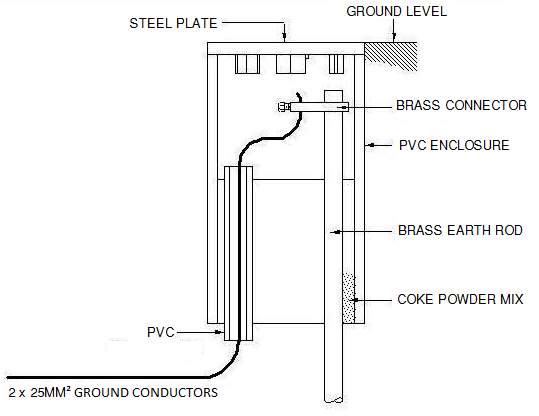
Fig 15 – Earthing Installation Arrangement
6. Lightning Strikes to BS EN 62305 Part 4
BS EN 62305 requires us to undertake a risk assessment procedure to determine whether or not a certain level of protection is needed. These are referred to as the four R’s:
- R1 – Risk of loss of human life
- R2 – Risk of loss of service to the public
- R3 – Risk of loss of cultural heritage
- R4 – Risk of loss of economic value
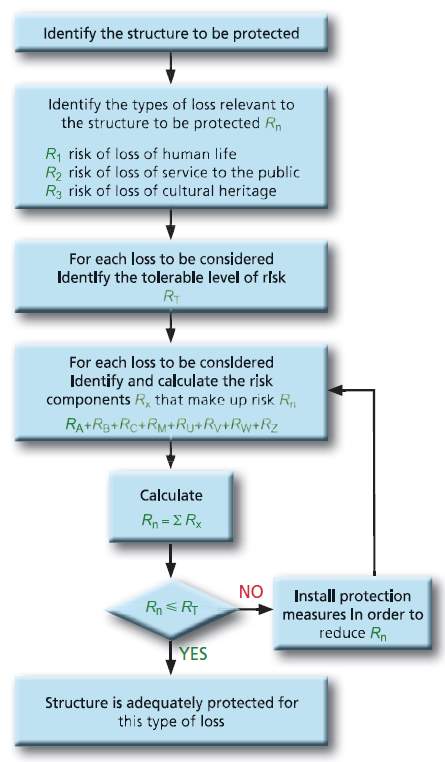
Fig 16 – Procedure for deciding the need for protection (BS EN/IEC 62305-1), (Furse 2017)
Working through Fig.8 it is apparent that we need sufficient earthing requirements for the building and our new luminaire design, this is assuming that there is nothing currently in place.
An earth tape will be required to be installed to the building perimeter and connected to our new earth rod being installed (Fig. 7) to protect the building from a direct lightning strike, also our new control panel will require a surge protection device to protect the newly installed assets (Luminaires and associated PV equipment) this will be connected directly to the new earth bar being installed with the relevant signage warning not to disconnect under any circumstances.
7. Suitable cable containment and installation method
The cable containment selected had to comply with the following conditions:
- Corrosion resistant
- Maintenance free
- Suitable weight loading capabilities
- Easy to cut to length requiring minimal plant & equipment
- Fire resistant
- Lightweight
The ideal material that met all the above criteria was GRP cable tray, along with being 40% lighter than traditional steel cable tray that has been galvanised coated and a lot cheaper than the stainless steel alternative. Along with meeting all of the above criteria GRP cable tray does not require bonding back to earth thus reducing installation time, it can be easily fastened together and is self-extinguishing so in the event of a fire has possible equipment saving qualities.
The weight loading for a 5metre piece of GRP cable tray is rated at 30kg/m which is more than adequate for the 16mm² XLPE/SWA 3 core cable being installed which weighs 2kg/m.
The installation method selected had to comply with the following criteria:
- Security conscious
- Maintenance free
- Easily repairable
- Corrosion resistant
Due to the lamp posts design of being bottom entry for security reasons we opted for the cable tray to be hung on a gripple fixing arrangement underneath the pier. This includes a single fixing every 2m into the structure of the pier from below and every 5m a brace wire in the horizontal axes to stop any swaying occurring.
This meets all of the above criteria as it is produced using stainless steel, spares are easily available and can be stored in the process building, no ongoing maintenance is required and replacement of a single fixing takes seconds with no specialist tools.
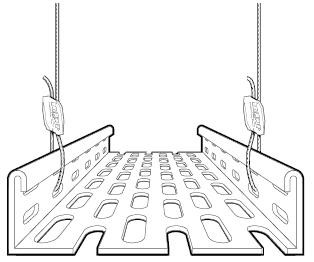
Fig 17 – Cable Tray Fixing Arrangement Example (Swifts, 2015)
8. Applicable IP Ratings for all items used.
International Protection Markings (IP) IEC standard 60529 are used to classify the level of protection provided by a certain piece of equipment these can include protection from ingress of dust, water, accidental organic contact etc. This standard aims to provide in detail the level of protection offered rather than manufacturer’s just describing things as “waterproof” etc.
IP ratings are made up of two digits, the first is the level of protection against solid particles and the second against liquid ingress. The table below has been created to show how the different levels of protection vary.
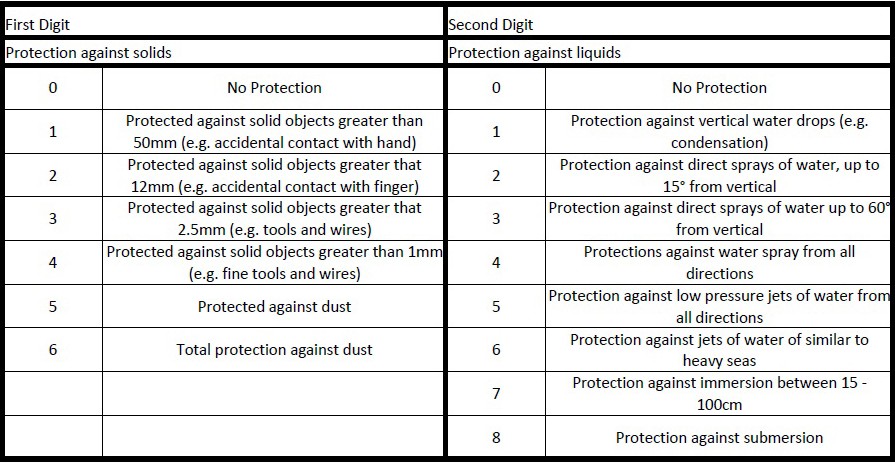
Fig 18 – IP Rating Table (17th Edition Wiring Regulations, 2015)
All applicable sundry items being used from junction boxes inside the lampposts to the glands being used will have to maintain a constant IP rating of IP66 or higher to keep in line with regulation 709.512.2.11 on page 226 onwards of BS7671, this is due to the marina being classed as a special location.
9. Electrical Installation Block Cable Diagram (PDF & CAD file).


10. PDF’s of relevant information used above.
1. Lighting Calculation

2. BS7671 Specification for pier and jetty environments


3. Earthing specifications

4. Lightning specifications

5. Containment guide

Mechanical Design Review
The mechanical design process encompasses the following factors:
- Overall mechanical design prospect
- Specification of lamp post and treatments/protection
- Stress Analysis verification
- Implementation plan
- Supplementary parts
Overall Mechanical Design Prospect
The mechanical design encompasses the selection, fixing method and location of the lamp posts. The concrete bases that the existing lamp posts are set in will be utilised in the fixing of the new lamp posts. The specification and fixing method of the lamp posts will be explained in more detail during the mechanical design review.
Due to not being familiar with and Peru not having set standards regarding mechanical design and installation, British standards and applicable European standards will be used.
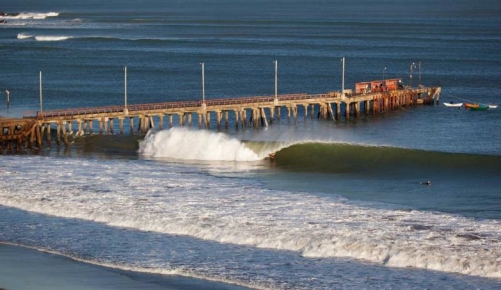
Figure 19 – A view showing the pier and existing lamp posts that will be removed.
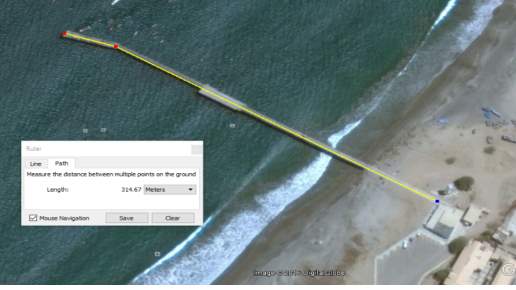
Figure 20 – 8 lamp posts will be evenly distributed along the pier from the process building to the end of the pier.

Process Building
Specification of lamp post and treatments/protection
The lamp post that has been selected is one manufactured by the company Abacus Lighting who are leaders in the industry. There were many variables to consider when selecting the lamp post: material, required strength, height, longevity, ease of maintenance and cost. Abacus Lighting provided the best available information about their products and had an impressive range and treatment options.
The lamp posts are designed to EN40 which is an industry standard used to design and verify lighting columns using characteristic loads. The weight of the light that has been selected is 10kg therefore a medium duty lamp post would be required to support it. The medium duty lamp post can have a projection length of 0.5m with a maximum headload of 10kg. The lights that have been selected have been designed to work at a height of 6m so the overspill of the light from one light to the next can be utilised.
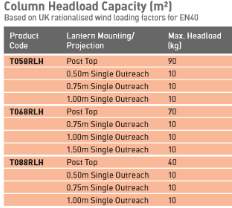
Figure 21 – T068RLH is the lamp post that will be used. (Abacuslighting.com, 2017)
For the TO68RLH lamp post, the PR6-05/S outreach bracket will have to be used for an outreach of 0.5m to suit a spigot of 114mm. This will suit the light that is being used and the split folding lamp post that has been selected.
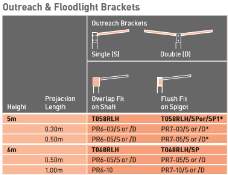
Figure 22 – Outreach bracket for lamp post. (Abacuslighting.com, 2017)
One of the main considerations of the design was the material the lamp post was to be made from and the protective treatment that would be required as a result. It was noted that Abacus made lamp posts from stainless steel 304 and 316 that would suit our application. The 316 stainless steel version of the lamp post would be the best suited to survive the harsh marine environment with an expected life of 70 years. The 316 stainless steel lamp posts were only offered in light duty and had a maximum allowed lantern weight of 8kg. It would therefore not be suited for the pier application as the lamp posts were not strong enough and not rated for the required load, or the wind factor it would be subjected to of around 8m/s.
The split folding base-hinged column lamp posts are manufactured from structural tube steel to EN10210. They are far stronger than their stainless counterparts and come in more heavy duty versions which are suited to the pier application. The TO68RLH that been selected has a maximum headload capacity of 70kg and can support a lantern of 10kg which is suited to the pier application.
Treatments
The lamp posts are hot dip galvanised to BS EN1461 during manufacture to increase longevity and prolong its life. Abacus can provide a marine environment finish where specified if necessary. The finish is applied to galvanised columns that are to be located in a marine environment to enhance durability. Required durability of system: No maintenance in first 10 years, minor maintenance between years 10 to 25, major maintenance after 25 years.
Foundations
The data from Abacus indicates the lamp post that has been selected has an overturning moment (OTM) of 10.3 KNm. As instructed by Abacus’ foundation recommendations, a non-passive mass concrete foundation will be used as ground pressure and side pressure cannot be considered. The foundation that will be used is a 15M75 as it works for a lamp post with an OTM of 15 KNm. This is the closest to the OTM of the chosen lamp post (10.3 KNm) and provides a safety factor of 1.5. A 15M75 foundation has a square width of 1400mm and a depth of 1000mm, as the root length of the lamp post is 1000mm. The lamp posts will be set into the concrete foundation and then fixed into place using bolts through the flange plate into the concrete.
The lamp posts will be cabled from underneath the lamp posts through the foundation. The base of the foundation will be exposed because the foundations will be raised off the floor. (The lamp posts are wired from underneath for security.)
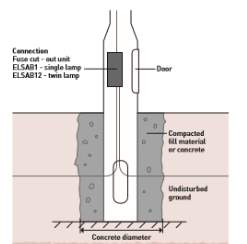
Figure 23 – Foundation (Abacuslighting.com, 2017)
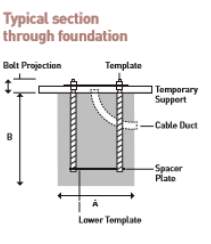
Figure 24 – Bolts into foundation (Abacuslighting.com, 2017)
Wind Force
Abacus lighting provides wind loading factors for the UK to EN40. Take for example Manchester, it has a mean wind speed velocity of 23.63 m/s which puts it in a medium wind loading region. A medium wind loading region encounters a wind loading force of 429 N/m2.
According to data from NASA (Carlowicz, 2016) – even during El Nino, wind speeds only ever peak at 4 m/s [the wind velocity varies between 4m/s and -4m/s].
Data from meteoblue indicates that during a normal year, peak wind speed occurs during August to December at less than 28kph or 7.78m/s. Wind speed is therefore not an issue, and the medium duty light post is suited to the application and environment.
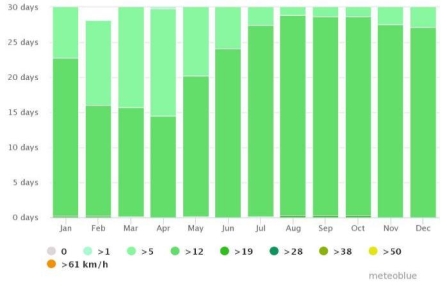
Figure 25 – Wind speed in Lobitos (meteoblue, 2014)
Stress Analysis
The lamp post’s environment was simulated on Inventor 2018 using integrated stress analysis software. A wind factor load of 427N was used – as this is likely the maximum wind loading factor the lamp post will ever be subjected to in the Lobitos region. This is a medium wind loading factor in the UK as stated by EN40. A lantern of 10kg was modelled for simulation purposes only, and the load was applied using a bearing load up the lamp post’s height. All materials and sizes were taken from Abacus’s specification.
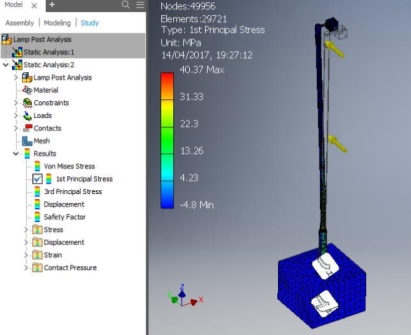
Figure 26 – 1st Principle Stress

Figure 27 – Displacement
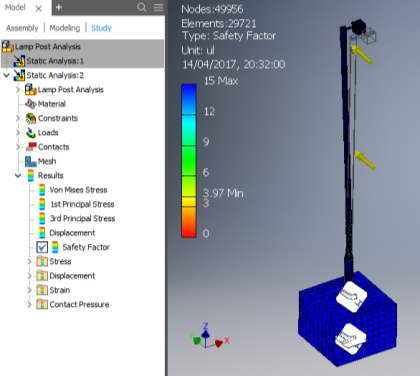
Figure 28 – Factor of Safety
Figure 17 indicates a maximum 1st principle stress of 40.37 MPa. This stress indicates the lamp post will more than withstand the subjected stress, as the material has a yield stress of 355 MPa. Figure 18 indicates a maximum deflection of 20mm which is very reasonable, and figure 19 shows the lamp post of a factor of safety of almost 4 which is extremely good for this type of application.
Implementation Plan
Light posts will be sourced from the UK and sent to Peru, or a direct alternative will be sourced from Peru or nearby.
- The existing lamp posts will be removed.
- Builders will work with fitters and set the new lamp posts into the foundations.
- The concrete will need to set for at least 3 days.
- Once the lamp posts are in place, the lantern brackets can be fitted to the lamp post.
- The electricians can then wire all the lamp posts in and fit the lights.
- The lamp posts will then be erected using the appropriate counterbalance unit.
Supplementary Parts
The counterbalance unit used for the lamp post is the RLH168.
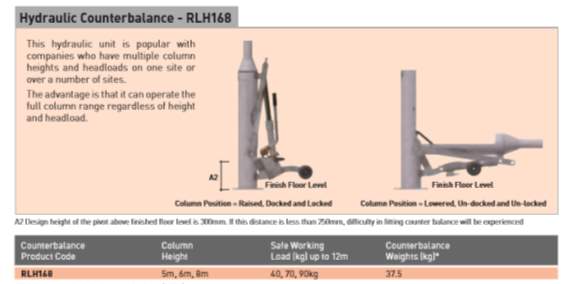
Figure 29 – Hydraulic counterbalance (Abacuslighting.com, 2017)

Results
The below pie chart (graph 01) and table (05) show how the project has been costed and a total amount for the project to be installed and commissioned to full working order. Detailed costings are provided below in the appendices which list individual parts and labour allocations / hours etc.

Graph 01 – Project costing’s relating to each element.
| Project Section | Amount |
| Electrical Materials | £ 12,778.38 |
| Electrical Labour | £ 3,931.08 |
| Mechanical Materials | £ 8,909.52 |
| Mechanical Labour | £ 8,160.00 |
| Total | £ 33,778.98 |
Table 05. Project costings used in above pie chart.
Discussion
Our original idea of supplying the medical facility with power & back up lighting along with the pier lighting described in the introduction were put on hold due to the amount of time & money required to provide the full package. Instead, we focused on the pier due to the amount of difference this could make to the local community as, according to the EWB website, the second highest occupation is as self-employed fisherman (Engineers without Borders, 2016) and the pier was in a poor state of repair hindering efficiency.
Due to having very little information about the pier, we have produced a design to replace all existing lighting posts with new galvanized items to stop any future corrosion. The new luminaires are aluminium and stainless steel construction with LED lighting modules installed which require no maintenance. We opted for said equipment due to the environment that it is being installed, the amount of years the installation is going to be in use for and that no maintenance is required apart from general inspections monthly and yearly to inspect for damage.
We chose to use British standards to work to due to the fact that South America has very little published on its electrical and mechanical installation standards. This enabled us to produce all of our calculations accurately and with increased confidence that should our PV array ever want to be expended for further use it could calculated easily by using the tables provided above in our electrical design.
Our costings were calculated using industry standard equipment with which some is currently unavailable in Peru which has increased the price considerably. Working through our future costings to include for any replacement items of equipment we have produced a very accurate estimate which albeit is more expensive than what the fishermen currently pay but will provide them with a suitable working environment as they work from early hours in the morning till early afternoon. The lighting at present is old technology and needs replacing due to its inefficiency and reliance on the national grid and inability to light the pier adequately for the work being carried out.
The price the fishermen pay of 150 sol/month for the current four 80w halogen lights installed on the pier does not take into account for any maintenance or replacement of items if a bulb were to blow or a light fitting were to malfunction. Where as our price of 1300 sol/month includes all maintenance taken into account and provides a local electrician and mechanical engineer a guaranteed part time job for the lifetime of the installation.
Understandably the PV installation is almost ten times more than what the fishermen pay at the moment so it would be unethical to ask them to pay the full amount. This project is aimed at an investor who, with the communities help would regenerate the pier and then instead of the fishermen paying the bill each month for the current lighting they would pay the new investor a certain fee for the maintenance and running of the pier lighting. This would help in the long term to invite tourists to come and use the pier for different activities such as fishing, crab fishing, scuba diving, surfing etc. Again all the companies involved contribute towards the running and maintaining of the pier lighting and anything else which is in need of repair.
In the future, the PV system could be utilised and upgraded to include a freezer in the process building for the fishermen, currently they come back in the afternoon with their catch and traders buy the fish from the boats at a reduced price due to no storage facilities available. Calculations could be completed and the extra amount of panels installed on the process building roof along with more batteries for overnight running of the freezer. This would enable the fishermen to transport their own goods to Talara increasing their profit and increasing the money brought into the community.
The amount of different equipment being run from PV panels is now getting larger due to manufacturers reducing wattage of equipment. While producing energy to be used by the local fishermen and local community, it is also doing this in a environmentally friendly way that is not producing any emissions or relying on fossil fuels which would filter down into the local community and present itself as a way of powering small items around the home with minimal equipment needed to do so.
Conclusion
The Engineers Without Borders design challenge is tasking us to “Discover more about Lobitos and propose an engineering invention that could make a difference”. We have completed this by using modern solar technology to resolve a basic problem in Lobitos which will not only help the second biggest trade but also improve the tourism prospects while bringing in an external investor who will monitor the situation and work with EcoSwell to build on the PV installation.
The old solar panel array which was placed on the pier by the government failed due to no training being given to anybody local or a relevant number to contact regarding assistance. Our solar array will be fully maintained and up kept by the investor and the electrical & mechanical assistance we have budgeted for. Whilst providing a clean source of energy, we are hoping that the job given to someone in the community to upkeep the equipment will also lead to improvements in the community where smaller solar arrays can be implemented after seeing the success of the pier.
Our recommendations are that the project leaders start searching for an investor who has the same vision as EcoSwell and the funding calculations would be more than adequate to enable the works to be completed. Most of the solar materials are available from South America due to their popularity and increased usage.
Further research could be carried out into how the solar PV array could be expanded to help the fishermen in keeping their catch fresh and transporting to the markets to sell for a higher price, which will increase their profit margins. Once the PV lighting installation is complete a water taxi could be implemented depending on demand for the surfers who currently have to travel from Talara by bus with all of their equipment. This would save on wear and tear on the road system currently in place, congestion and improve Lobitos appeal to tourists.
The current travel time from Talara to Lobitos by road is 45 minutes (27km). This could be reduced to 20 minutes by water taxi from the port of Talara, for each water taxi arriving / person arriving a small donation would be made or included in the ticket price which would help maintain and improve the pier’s running.
The above idea is currently in use on the island of La Gomera, a small island off Tenerife. They use a local water taxi due to the island’s geographical landscape which enables people to get around much easier than by car, reducing the island’s emissions. This has been a huge advantage to the community of La Gomera, the islands pier and ferry ports continue to grow and attract new investors which in turn update and modernise the facilities for the full use of all involved.
Bibliography
Ecoswell.org. (2017). EcoSwell. [online] Available at: http://www.ecoswell.org/home.html [Accessed 12 Apr. 2017].
“Engineers Without Borders”. Ewb-uk.org. N.p., 2017. Web. 17 Apr. 2017.
IET code of practice for grid connected solar photovoltaic systems. (n.d.). 1st ed.
“Solar Energy Data And Resources”. Solar Energy Local. N.p., 2017. Web. 17 Apr. 2017.
“ISO Standards”. Iso.org. N.p., 2017. Web. 17 Apr. 2017.
Panel, Canadian, and Canadian Solar. “Canadian Solar 325W 24V 72 Cell Poly Solar Panel”. MrSolar.com • Online Solar, LLC. N.p., 2017. Web. 17 Apr. 2017.
Ko, Jae-Sub, and Dong-Hwa Chung. “PV Module Configuration Considering Environment Conditions Of Photovoltaic System”. Journal of the Korean Institute of Illuminating and Electrical Installation Engineers 28.2 (2014): 31-41. Journal.
“Lobitos Spot Guide”. Magicseaweed.com. N.p., 2017. Web. 17 Apr. 2017.
“Paper-Thin PV Cells”. Refocus 5.1 (2004): 10. Web.
“Solar Energy Feasibility Study”. EcoSwell. N.p., 2017. Web. 17 Apr. 2017.
“Solar Energy Is Growing Up Fast”. The Electricity Journal 21.5 (2008): 3-8. Journal.
Smestad, Greg. “Generating Electricity From The Sun”. Solar Energy Materials and Solar Cells 31.1 (1993): 95. Web.
“MARCO POLO – Marco Polo”. Marco Polo. N.p., 2017. Web. 17 Apr. 2017.
References
“About Lobitos | Engineers Without Borders”. Ewb-uk.org. N.p., 2017. Web. 11 Apr. 2017.
Scaddan, B. (2015). 17th Edition IET Wiring Regulations. 1st ed. Florence: Taylor and Francis.
“Health And Safety Legislation – Laws In The Workplace”. Hse.gov.uk. N.p., 2017. Web. 17 Apr. 2017.
Scaddan, Brian. 17Th Edition IET Wiring Regulations. 1st ed. Florence: Taylor and Francis, 2015. Print.
weibel, Ken. “Should Solar Photovoltaics Be Deployed Sooner Because Of Long Operating Life At Low, Predictable Cost?”. Energy Policy 38.11 (2010): 7519-7530. Journal.
Ashhab, Moh’d Sami S., Hazem Kaylani, and Abdallah Abdallah. “PV Solar System Feasibility Study”. Energy Conversion and Management 65 (2013): 777-782. Journal.
Sciortino, J.A. “FAO Fisheries And Aquaculture Technical Paper No. 539”. Fishing harbour planning, construction and management (2010): 233-243. Web. 17 Apr. 2017.
“Lobitos, Piura Weather Averages | Monthly Average High And Low Temperature | Average Precipitation And Rainfall Days | World Weather Online”. Worldweatheronline.com. N.p., 2017. Web. 17 Apr. 2017.
“National Renewable Energy Laboratory (NREL)”. Nrel.gov. N.p., 2017. Web. 17 Apr. 2017.
Beardsley, Kate. “Introducing The UK Construction (Design And Management) Regulations 2015”. Proceedings of the Institution of Civil Engineers – Civil Engineering 168.1 (2015): n. page. Web.
“IEEE Journal Of Photovoltaics”. IEEE Journal of Photovoltaics 4.6 (2014): 1433-1435. Journal. 17 Apr. 2017.
“Lightning Protection To BS EN 62305”. Furse Protection. N.p., 2017. Web. 17 Apr. 2017.
“Lamps, Leds And Circuits”. Thorn Lighting Downloads. N.p., 2017. Web. 17 Apr. 2017.
“How To Design Solar PV System – Guide For Sizing Your Solar Photovoltaic System”. Leonics.com. N.p., 2017. Web. 17 Apr. 2017.
“Engineering Council”. Engc.org.uk. N.p., 2017. Web. 17 Apr. 2017.
Smestad, G. “Renewable Energy, Sources For Fuels And Electricity”. Solar Energy Materials and Solar Cells 43.4 (1996): 427-428. Journal.
Haas, Reinhard. “The Value Of Photovoltaic Electricity For Society”. Solar Energy 54.1 (1995): 25-31. Web.
Abacuslighting.com. (2017). Base-hinged and fixed columns. [online] Available at: http://abacuslighting.com/base-hinged-fixed-columns.asp .19 Apr. 2017
Appendices
Cost Analysis
Electrical
| Materials | |||||
| Item | Quantity Reqd | Cost | Total | ||
| 1 | GRP cable tray 100mm wide x 3M | 110 | £ 24.73 | £ 2,720.30 | |
| 2 | GRP cable tray joints | 240 | £ 1.46 | £ 350.40 | |
| 3 | GRP cable tray tee’s | 4 | £ 17.45 | £ 69.80 | |
| 4 | 16mm² 3 core XLPE/SWA BS5467 | 400 | £ 4.18 | £ 1,672.00 | |
| 5 | 16mm² 3 core XLPE/SWA gland pack | 9 | £ 8.72 | £ 78.48 | |
| 6 | IP rated junction box & terminals | 8 | £ 10.56 | £ 84.48 | |
| 7 | Tray hanger kit ,fixings & wire rope | 100 | £ 17.48 | £ 1,748.00 | |
| 8 | 100mm cable ducting, twin wall (6m) | 12 | £ 11.00 | £ 132.00 | |
| 9 | 5pin plug & sockets | 8 | £ 27.49 | £ 219.92 | |
| 10 | 93Ah Gel battery | 8 | £ 180.00 | £ 1,440.00 | |
| 11 | Solar PV cell | 7 | £ 210.00 | £ 1,470.00 | |
| 12 | LED Lamp | 8 | £ 300.00 | £ 2,400.00 | |
| 13 | IP dusk to dawn sensor | 1 | £ 150.00 | £ 150.00 | |
| 14 | Earth Bar, Rod & Inspection pit | 1 | £ 150.00 | £ 150.00 | |
| 15 | 50mm earth cable | 20 | £ 4.65 | £ 93.00 | |
| Materials Total | £ 12,778.38 | ||||
| Labour | |||||
| Persons Required | Quantity Reqd | Cost P/Hr | Total Hours | Cost | |
| 1 | Electrician | 2 | £ 18.46 | 56 | £ 2,067.52 |
| 2 | Electrician Mate | 2 | £ 12.35 | 56 | £ 1,383.20 |
| 3 | Commissioning Engineer | 1 | £ 28.46 | 16 | £ 455.36 |
| 4 | Training Engineer | 1 | £ 22.47 | 16 | £ 359.52 |
| Labour Total | £ 3,931.08 | ||||
| Electrical Grand Total | £ 16,709.46 | ||||
Mechanical
| Materials and Items | |||||
| Item | Qty | Cost | Total | ||
| 1 | Lamp post and base plate fabrication | 8 | £1,000.00 | £8,000.00 | |
| 2 | Treatments – Zinc Spray | 8 | £40.00 | £320.00 | |
| 3 | M16 x 120 Bolt | 32 | £1.28 | £40.96 | |
| 4 | M16 Nyloc Nuts | 32 | £0.53 | £16.96 | |
| 5 | M16 Washer | 64 | £0.50 | £32.00 | |
| 6 | Supplementary Parts | 1 | £500.00 | £500.00 | |
| Materials Total | £8,909.92 | ||||
| Labour | |||||
| Personnel | Qty | Cost/hr | Total Hours | Cost | |
| 1 | Engineer | 2 | £40.00 | 60 | £4,800.00 |
| 2 | Fitter | 2 | £28.00 | 60 | £3,360.00 |
| Labour Total | £8,160.00 | ||||
| Total Cost | £17,069.92 | ||||
Future Costing’s
| Lifespan of materials | |||
| PV Panels | 25 years output, 10 years materials warranty | ||
| Batteries | Approx. 450 cycles before batteries start to dissipate | ||
| LED Lamp | 50,000 hours guaranteed – Approx. 22 years | ||
| Dusk to Dawn Sensor | 10 year manufacturer warranty | ||
| Payback period | |||
| Item | Cost | Comments | |
| Existing Cost for lighting | 150s/month | Currently only 4×80 watt halogen fittings in use. | |
| New lighting cost | 155000 sol – 1300s/month | Approx. 10 year lifespan before any future maintenance required | |
| Future Maintenance | |||
| Item | Time | Cost | |
| Weekly maintenance check | 8 hrs | 500 s/month – 1 Electrician | |
| Yearly maintenance check | 40 hrs | 1500 s/year – 1 Electrician & 1 Mechanical Engineer | |
Cite This Work
To export a reference to this article please select a referencing stye below:
Related Services
View allRelated Content
All TagsContent relating to: "Electronics"
Electronics regards the science and technology involved in the development of electrical circuits and electronic devices and equipment that use them.
Related Articles
DMCA / Removal Request
If you are the original writer of this dissertation and no longer wish to have your work published on the UKDiss.com website then please:




